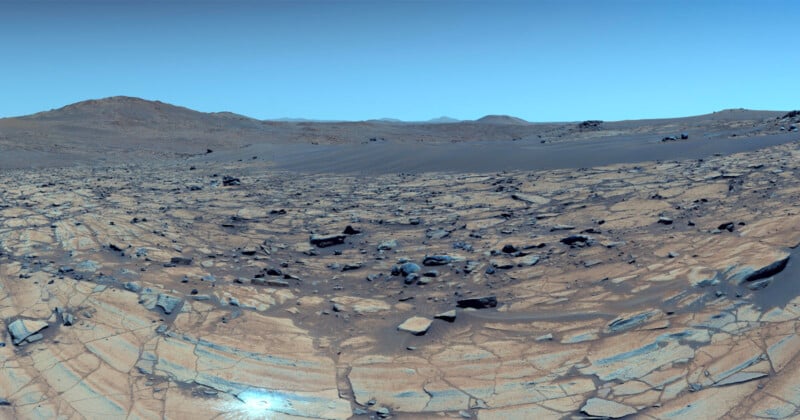A Sunny Day on Mars? Perseverance Rover Captures Blue Skies on the Red Planet

Clear days on Mars don’t come around often. Most of the time a steady haze of dust hangs in the air, giving the Red Planet its signature rusty glow.
But the two NASA rovers that roam around on the Red Planet, Perseverance and Curiosity, will occasionally witness an anomaly in the weather, like recently when Perseverance captured clear skies and a calm atmosphere.
The NASA Jet Propulsion Laboratory (JPL) put together the 96-image 360-degree panorama and enhanced the color to create a deceptive blue sky that looks unusually inviting for Mars which has an average temperature of -81°F (-63°C).

The pleasant conditions allowed NASA to capture what it says is one of its sharpest panoramas of the Perseverance mission so far. The image was taken at a location the science team is calling ‘Falbreen’.
“Our bold push for human space exploration will send astronauts back to the Moon,” Sean Duffy, acting NASA administrator, says in a statement. “Stunning vistas like that of Falbreen, captured by our Perseverance rover, are just a glimpse of what we’ll soon witness with our own eyes. NASA’s groundbreaking missions, starting with Artemis, will propel our unstoppable journey to take human space exploration to the Martian surface. NASA is continuing to get bolder and stronger.”

The true-color image shows what a clear day on Mars looks like to the human eye. Both images were taken by the rover’s Mastcam-Z camera but processed differently.
“The relatively dust-free skies provide a clear view of the surrounding terrain,” says Jim Bell, Mastcam-Z’s principal investigator at Arizona State University in Tempe. “And in this particular mosaic, we have enhanced the color contrast, which accentuates the differences in the terrain and sky.”
One detail that drew the science team’s eye is a sizable rock perched atop a dark, crescent-shaped sand ripple just to the right of the mosaic’s center, roughly 14 feet (4.4 meters) from the rover. Geologists refer to this as a “float rock,” since it likely originated elsewhere and was carried to its current spot. How it arrived — whether by landslide, water, or wind — remains unclear, though the team suspects it settled here before the sand ripple took shape.
Perseverance has previously captured the Martian moon Deimos, a ‘skull’, and a remarkable crop of blue rocks.
Image credits: NASA/JPL-Caltech/ASU/MSS